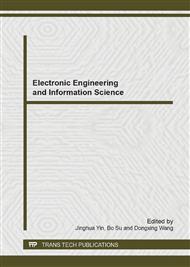p.526
p.530
p.534
p.538
p.542
p.546
p.551
p.555
p.560
Key Technology Research Based on the Smart Home BSNs
Abstract:
In recent years, Mobile computing and intelligent household hot topic, more and more get the attention of people. The current smart home systems for self-help to collect information about the indoor environment, at the same time can also interact with the user, but the system when the user needs to send control commands always spend time learning about the current state of household environment, manual control will become a kind of bondage. So this paper using a user activity recognition system based on smart phone, its main function is based on the current user on sensor information to obtain the user's current activity, the current environment control command. Combining the system and smart home system, family equipment according to the user's activities independently adjust to cooperate with users, users are more focused on the main transaction processing. This paper will be focused on energy saving problem, smart home system based on smart phone user activity recognition and the coordination between them.
Info:
Periodical:
Pages:
542-545
Citation:
Online since:
July 2014
Authors:
Price:
Сopyright:
© 2014 Trans Tech Publications Ltd. All Rights Reserved
Share:
Citation:


